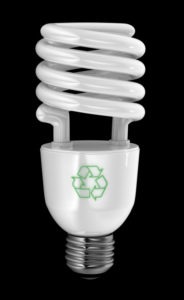 Influence is an important trait when you’re a business owner. You need to have the respect and impact to cause the desired outcomes. These outcomes might be a sale from a customer, the cooperation of your team, or getting others to talk about you online. Regardless of what you are trying to do, having influence that leads to desired outcomes can be a real benefit for your business.
Influence is an important trait when you’re a business owner. You need to have the respect and impact to cause the desired outcomes. These outcomes might be a sale from a customer, the cooperation of your team, or getting others to talk about you online. Regardless of what you are trying to do, having influence that leads to desired outcomes can be a real benefit for your business.
Every person and business can be an influencer. In fact, very successful people and businesses are often great influencers. For the average person or small business to be a successful influencer, you need only to apply and leverage some of these points to see positive results.
- Be known as an expert in something – For example, if you sell chocolate, become an expert on making chocolate tarts.
- Pinpoint a topic and find a niche – For example if you sell cosmetics, you might focus on people who want only natural facials.
- Share your expertise regularly – Write a scheduled article for your local newspaper, create a weekly newsletter and/or do a weekly radio talk show.
- Help other influencers – Connect with people who have a large network and help them with their cause. For example, if the influencer is promoting a fundraiser, you who sell cookware might offer to create a dessert as a prize to be auctioned off to support the cause. This way you show your expertise.
- Promote your expertise through workshops and interviews – For example, if you sell cosmetics, partner with a health food store and present a workshop on how to eat healthy, feel great and look great. Look for interview opportunities and interview other influencers.
- Offer stories and your expert advice to local news outlets – Sometimes local news media are looking for community based stories or need an expert opinion on a topic. Make sure they know to call you.
- Integrate your expertise with trends – For example, your town is sponsoring a yo-yo contest, you as the chocolate expert show people how to make their own chocolate yo-yos.
- Engage your audience and develop relationships – Connect and have conversations with as many people as you can and in as many ways as you can. Friend them on social networks, talk to them on the phone, participate in town events, attend PTO meetings, and support causes.
- Create a plan, measure your growth and adjust your plan according to results – Define your niche, pick one thing to do on this list every week, connect with new people every week, and evaluate the results after a month. Ask yourself how you can do better, what haven’t you done yet, and adjust your plan for the following month. After six months, compare the amount of business you’ve gained from the previous six months.
By instituting and leveraging a few of these ideas you too can become an influencer in your circle and impact your business.
 Free e-book “Business Owner’s Road Map to Success.” It has over 50 pages of techniques for everything a small business owner needs to master, from business planning and ethical selling to a success mindset. It’s all there and it’s free for you. To get it, just “Like” our Facebook Page here: http://on.fb.me/KsIN6P Pass it on!
Free e-book “Business Owner’s Road Map to Success.” It has over 50 pages of techniques for everything a small business owner needs to master, from business planning and ethical selling to a success mindset. It’s all there and it’s free for you. To get it, just “Like” our Facebook Page here: http://on.fb.me/KsIN6P Pass it on!














